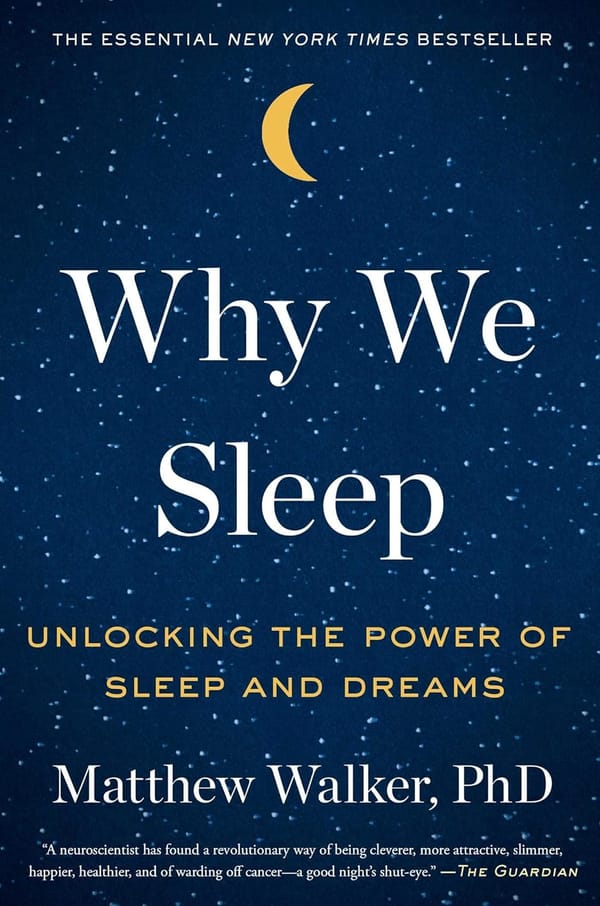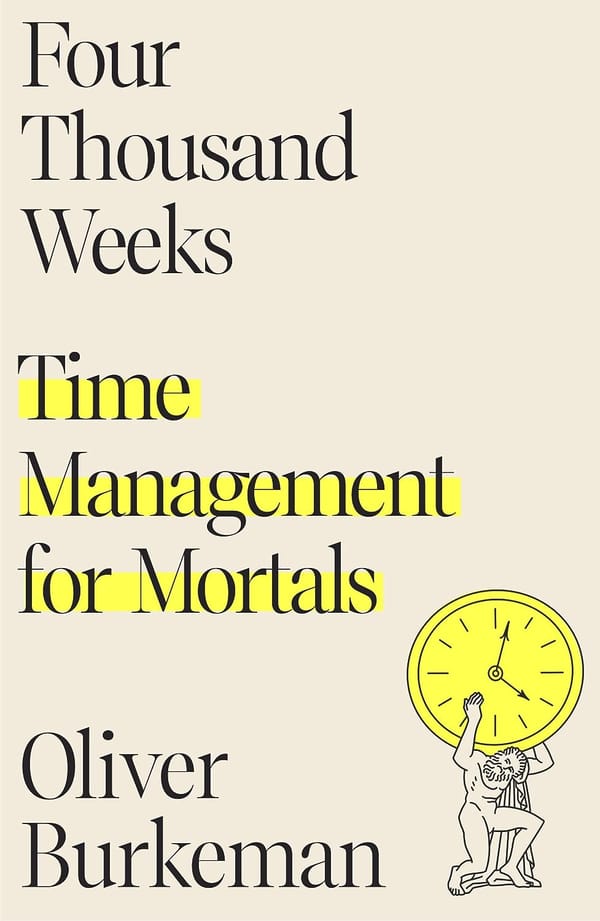Start With Why - Book Notes
If you enjoyed my review, consider supporting me by using the affiliate links below to purchase the book. Your kindness fuels my passion for sharing captivating reads with you!
🚀 The Book in 3 Sentences
- "Start With Why" by Simon Sinek argues that effective leadership and organizational success are rooted in a clear understanding of why a company exists, beyond mere profit
- The Golden Circle concept, comprising "Why," "How," and "What," emphasizes that successful leaders inspire action by communicating their purpose (Why) before detailing products or services (What).
- The book highlights the importance of trust, shared values, and a genuine sense of purpose in building strong organizational cultures and lasting success.
👱 Who Should Read it?
"Start With Why" by Simon Sinek is recommended for individuals interested in leadership, business strategy, and organizational development. It is particularly relevant for entrepreneurs, business leaders, managers, and anyone seeking insights into how successful leaders and organizations differentiate themselves by understanding and communicating their core purpose. Additionally, those interested in building strong organizational cultures, fostering employee loyalty, and achieving long-term success will find valuable lessons in the book.
🍀 How the Book Changed Me
✍️ Top 3 Quotes
- "People don’t buy WHAT you do, they buy WHY you do it."
- "Trust comes from being a part of a culture or organization with a common set of values and beliefs."
- "The goal is not to hire people who simply have a skill set you need, the goal is to hire people who believe what you believe."
🔨 3 Action Points
- Define and Communicate Your Why:
Clearly articulate the core purpose or belief that inspires your actions. This should go beyond the mere description of what your organization does or how it operates. Emphasize why your organization exists and the values that drive it. Ensure that this message is communicated consistently across all levels of the organization. - Build a Culture of Trust and Belonging:
Prioritize hiring individuals who align with your organization's why. Cultivate a workplace culture that fosters trust and a sense of belonging. When employees share common values and beliefs, it creates a foundation for a cohesive team that is motivated to work towards a shared purpose. Regularly assess and reinforce this cultural alignment. - Focus on Early Adopters and Differentiation:
Apply the Law of Diffusion by targeting early adopters who resonate with your organization's why. Instead of competing solely on the basis of what and how, differentiate your organization by emphasizing why you do what you do. This approach can help build a loyal customer base that identifies with your values, leading to sustained success in the market.
📗 Summary & Notes
The Power of True Leadership
Simon Sinek, the author of "Start With Why," highlights the difference between inspiration and manipulation in leadership. According to Sinek, true leaders have the power to motivate a group of followers who act voluntarily and sincerely out of a feeling of purpose rather than under duress. People become highly motivated as a result of this inspiration, which reduces their susceptibility to outside rewards. According to Sinek, people who inspire others garner a group of people who engage in the public interest—not out of duty but rather out of a sincere desire.
The Art of Influence
According to Sinek, there are only two methods to affect people's behavior: inspiration and manipulation. He explores the deceptive strategies frequently used by businesses that don't understand why their clients pick them. Sinek examines the short- and long-term benefits of various tactics, such as pricing manipulation and fear-based marketing. Manipulations can be successful, but they don't promote loyalty and might gradually undermine trust.
The Golden Circle
With the introduction of "The Golden Circle," Sinek dissects the identity of an organization into its three defining layers: What, How, and Why. Few businesses can succinctly state why they exist in addition to for profit, even if the majority can describe what they do and some even how. According to Sinek, effective companies and leaders communicate from the inside out by starting with their motivations.

The Human Need to Belong
Building on the idea of The Golden Circle, Sinek explores the basic human need for belonging. He contends that people are drawn to those who share their values and beliefs, creating trust and a sense of connection. This trust, rooted in the limbic brain, influences decision-making and drives individuals to include certain products or brands in their lives.
Balancing the Golden Circle
According to Sinek, there is an imbalance in The Golden Circle that allows manipulations to flourish and trust to decline. Leaders of successful firms must be able to explain the organization's mission statement, which goes beyond just selling goods and services. The Whats are the concrete outcomes of those actions, while the Hows stand for the principles driving the cause. In The Golden Circle, maintaining authenticity, consistency, and balance are essential for preserving trust.
Trust and Culture
Sinek explores the relationship between trust and organizational culture, emphasizing that great leaders focus on hiring individuals who believe in the organization's why. Trust is a feeling, not a rational experience, and it is nurtured when individuals within an organization share common values and beliefs. The culture of a company becomes a representation of its collective why.
Hiring for Belief
To ensure success, Sinek argues that companies should focus on hiring individuals who believe in the organization's why, not just those with a specific skill set. When employees share the same values and beliefs, they are more likely to guarantee the organization's success by working passionately and seeking innovative solutions for themselves.
Differentiation and Success
Sinek challenges the conventional wisdom that differentiation occurs primarily in how and what a company does. He argues that true differentiation happens in why and how an organization pursues its cause. Successful leaders, embodying a clear sense of purpose, inspire decisions that align with beliefs rather than merely rationalizing based on facts and figures.
The Law of Diffusion
Exploring the Law of Diffusion, Sinek discusses the importance of focusing on early adopters who share an organization's values. By targeting those who believe in the why, an organization can ultimately achieve mass-market success. The goal is not just to gain customers but to attract those who share the organization's values.
Three-Dimensional Golden Circle
Sinek introduces the three-dimensional aspect of The Golden Circle, emphasizing that it is a top-down view of a cone. Leaders sit at the top as the emotional inspiration, and as the cone extends downward, the organization becomes the vessel for delivering the message to the chaotic marketplace.

The Role of Visionaries and Realists
Discussing the complementary roles of visionaries (WHY-types) and realists (HOW-types), Sinek explains that a successful organization requires both perspectives. Visionaries focus on the future and the intangible, while realists provide practical solutions in the present. The balance between these two types is crucial for an organization's success.
Symbols and Meaning
Sinek emphasizes the power of symbols in making the intangible tangible. Symbols, whether in the form of logos or other representations, gain meaning when infused with the values and beliefs of an organization. Clarity of purpose gives symbols the power to command meaning and inspire others.
Avoiding Imitation and The Celery Test
The author cautions against blindly copying successful organizations, stressing that best practices are not universally applicable. Sinek introduces the Celery Test, a metaphorical approach to discerning the right practices for an organization. Ensuring that what an organization does aligns with its beliefs allows it to effectively communicate its why.
Ensuring Clarity Amid Growth
Sinek discusses the challenges organizations face as they grow and emphasizes the importance of maintaining clarity in their why. The founder's vision must be integrated into the organizational culture to inspire and lead beyond the founder's lifetime. Metrics for what an organization does may be clear, but ensuring clarity in why requires a different approach.
Finding WHY
Sinek argues that finding the why is a process of discovery, not invention. It involves looking in the opposite direction from where one is currently and avoiding the trap of competing with others. Success comes not just from achieving goals but from a clear pursuit of why those goals matter.
The Essence of Leadership
The essence of leadership, Sinek asserts, lies in having followers. Leaders need a vision of a world that does not exist and the ability to communicate it effectively. The combination of a visionary outlook and effective communication distinguishes true leaders from others.



